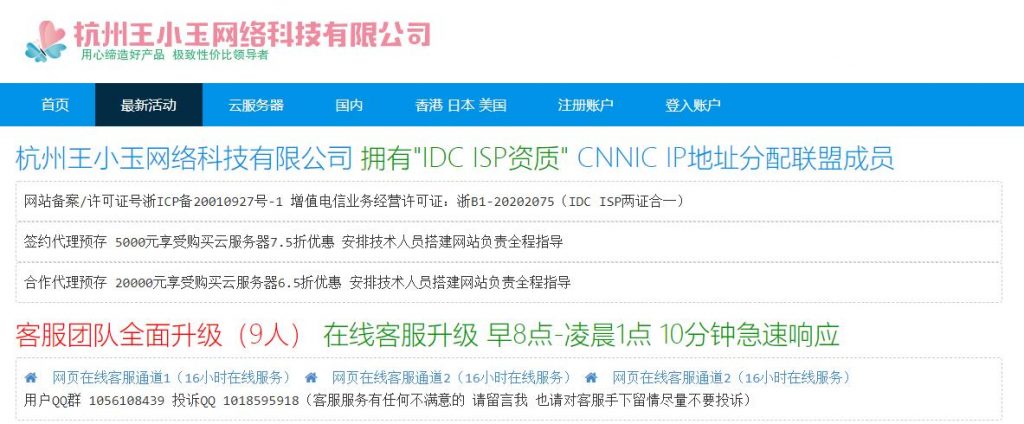VLSnano5
nano5 时间:2021-01-17 阅读:()
ThermalTestofanImprovedPlatformforSiliconNanowire-BasedThermoelectricMicro-generatorsC.
CALAZA,1,3L.
FONSECA,1,4M.
SALLERAS,1I.
DONMEZ,1A.
TARANCON,2A.
MORATA,2J.
D.
SANTOS,2andG.
GADEA21.
—IMB-CNM(CSIC),CampusUAB,08193Bellaterra,Barcelona,Spain.
2.
—IREC,C/JardinsdelesDonesdeNegre1,pl2a,08930Barcelona,Spain.
3.
—e-mail:carlos.
calaza@imb-cnm.
csic.
es.
4.
—e-mail:luis.
fonseca@csic.
esThisworkreportsonanimproveddesignintendedtoenhancethethermalisolationbetweenthehotandcoldpartsofasilicon-basedthermoelectricmicrogenerator.
Micromachiningtechniquesandsilicononinsulatorsub-stratesareusedtoobtainasuspendedsiliconplatformsurroundedbyabulksiliconrim,inwhicharraysofbottom-upsiliconnanowiresareintegratedlaterontojoinbothpartswithathermoelectricactivematerial.
Inpreviousdesignstheplatformwaslinkedtotherimbymeansofbulksiliconbridges,usedasmechanicalsupportandholderfortheelectricalconnections.
Suchsupportsseverelyreduceplatformthermalisolationandpenalisethefunc-tionalareaduetotheneedoflongersupports.
Anewtechnologicalrouteisplannedtoobtainlowthermalconductancesupports,makinguseofapar-ticulargeometricaldesignandawetbulkmicromachiningprocesstoselec-tivelyremovesiliconshapingathindielectricmembrane.
Thermalconductancemeasurementshavebeenperformedtoanalysetheinuenceofthedifferentdesignparametersofthesuspendedplatform(supporttype,bridge/membranelength,separationbetweenplatformandsiliconrim,)onoverallthermalisolation.
Athermalconductancereductionfrom1.
82mW/Kto1.
03mW/K,hasbeenobtainedontesteddevicesbychangingthesupporttype,eventhoughitslengthhasbeenhalved.
Keywords:Microgenerator,thermoelectricity,harvestingINTRODUCTIONMostofworld'spoweruseisgeneratedbymeansofheatenginesusingfossilfuelcombustion,butalmosttwo-thirdsoftheenergythatisfedintothesesystemsradiatesaway,becomingawasteheatsource.
1Thermoelectricmodules,whichhavethecapabilityofconvertingheatintoelectricity,havebeenproposedasapromisingsolutiontoturnthiswasteheatintousefulpower.
Althoughrecentre-searchhasbeenintenselyexploringnewmaterialsandtechnicalroutestoboosttheefciencyofsuchdevices,thermoelectricenergyconversionstillrep-resentsamajorscienticchallengetowardsaneffectivewasteheatrecovery.
Severalhigh-perfor-mancethermoelectricmaterials,suchasBi-Tebasedalloys,skutteruditecompounds,Ag-Pb-Sb-Tequaternarysystemsandhalf-Heuslercompounds2–6havebeenlatelyreportedasefcientthermoelectricmaterials,buttheyareknowntobescarceandexpensive,toxicinsomecases,aswellasdifculttointegrateinmicroelectronics.
Alternativedevelop-mentsfocusonthesmartstructuringofmainstreammicroelectronicmaterialsasaroutetoachievesili-con-basedthermoelectricgenerators.
Individualsiliconnanowires(SiNWs)haveshownanen-hancedthermoelectricperformanceoverthatofthebulksilicon(ZT0.
01).
7,8However,eventhoughimprovedZTvalueshavebeenreported,thedis-cussionaroundwhetherthisnanomaterialwillen-abletheproductionofcompetitivethermoelectricdevicesisstillopen.
Ouraimistoworktowardsanall-Sithermalgeneratorbydesigningthermally(ReceivedJune12,2015;acceptedOctober22,2015;publishedonlineNovember24,2015)JournalofELECTRONICMATERIALS,Vol.
45,No.
3,2016DOI:10.
1007/s11664-015-4168-82015TheAuthor(s).
ThisarticleispublishedwithopenaccessatSpringerlink.
com1689efcientsiliconmicroplatformssuitableforthesubsequentmonolithicintegrationofbottom-upSiNWsasthermoelectricactivematerial.
DESIGNANDFABRICATIONTheplanarcongurationproposedforthesilicon-basedthermoelectricmicrogeneratorusesasilicononinsulator(SOI)substrateandsiliconmicroma-chiningtechniquestodeneathermallyisolatedsuspendedSiplatformsurroundedbyabulkSirim.
BothpartsaresubsequentlylinkedbymeansofSiNWarraysthataregrownonaCVDreactorusingabottom-upvapour–liquid–solid(VLS)process.
9Inourpreviouswork,thesuspendedplatformwaslinkedtothebulkSirimbymeansofbulkSibridges,inadditiontotheSiNWarrays,actingasmechanicalsupportandasaholderfortheelectricalconnections.
9–11However,thiskindofsupportse-verelyreducestheplatformthermalisolationduetothehighthermalconductivityofthebulkSi,limit-ingthedeviceabilitytogetalargetemperaturegradientfromawasteheatsource.
Hence,longbridgesupportsareneededtodeveloplargethermalgradientsandsignicantdeviceareaiswastedgivingrisetopoorpowerdensities.
Inthiswork,anewtechnologicalroutehasbeenset-uptoincreasetheplatformthermalisolationbyreplacingsuchsiliconbridgesbythindielectricmembranes,withamuchlowerthermalconductivity,whichareusedtosupportthemetallicelectricalconnections.
Apar-ticulargeometricaldesignisproposedtoetchtheSiunderthemembraneareausingashortwetbulkmicromachiningprocess,whichisenoughtoshapethesesuspendedlowthermalconductancethinmembranesand,atthesametime,improvethesurfacequalityoftheh111iverticalwallswheretheSiNWswillbegrown.
AsketchofbothdesignsisshowninFig.
1.
Theyconsistofasuspendedsiliconplatform(S1)thatwillbelaterconnectedtoabulksiliconrim(S2)withSiNWsarrays.
Informerdesigns,theelectri-calconnectionswereplacedontopofbulksiliconbridgeswhileinthenewdesignproposedasanalternativetheyarelayingonathindielectricmembrane.
TheSiNWswillbegrownperpendiculartotheh111iwallsthathavebeenusedtodenethedifferentSipartsontheSOIdevicelayer.
Thetemperaturedifferenceattainableacrosssuchde-viceswhenoperatedinharvestingmode(placedontopofaheatsource)willessentiallydependonthelengthofthethermoelectricmaterialconnectingthehigh-andlow-temperatureareas,whichistechno-logicallylimitedbythetaperingeffectduringNWsgrowth.
12–15TrenchesforthesuccessivelinkageofmultipleSiNWarrayshavebeendevelopedinordertoovercomethisproblem,providinglargereffectiveSiNWlengths.
AdetailedschematicoftheintendednalstructureisshowninFig.
2.
ThefabricationisperformedonSOIwafers,withthicknessesoftheSidevicelayer,buriedoxidelayerandhandleSiwaferof15lm,0.
5lm,and500lm,respectively.
DuetothepeculiarityofSiNWsgrowth,whichtakesplacepredominantlyalongtheh111idirection,a(110)surfaceorientationisselectedfortheSOIdevicelayersurface,sothath111iplanescanbeexposedonverticallyetchedtrenches.
Incontrast,theorienta-tionoftheSOIsiliconhandlewaferdoesnotplayanyroleandastandard(100)orientationisused.
Thefabricationprocessstartswiththedepositionofa300nmthickLPCVDSi3N4layer,tobeusedasmechanicalsupportforthemetals.
Afterpatterningthisnitridelayerusingphotolithographyandadryetchprocess,themetallizationusedtosimultane-ouslyobtaintheelectricalconnectionswiththesili-condevicelayerandabuilt-inheaterelement(electricallyisolatedfromthesiliconbythenitridelm)wasperformedusinga30nmthicktita-nium/tungsten(Ti/W)(10/90%)adhesionlayeranda200nmthickWlayerdepositedbysputtering.
Asecondphotolithographyandawetetchwereusedtopatternthemetal.
Oncethedifferentmetalstruc-turesarepatternedthesurfaceisprotectedwitha1lmthickSiO2layerdepositedbyPECVD.
ThelaststepontheSOIdevicelayeristodenethesiliconstructures,i.
e.
theisolatedplatformandthetren-chesthatwillenclosetheSiNWs.
ThisisdonewithaphotolithographicstepandadryetchprocessthatsequentiallyremovestheSiO2andthesilicondevicelayer,untiltheburiedoxidelayerisreached.
Next,ashort(150s)KOHetchstepwasperformedonthewafertopsidetoreleasethenitridebridge.
Thisnewstepiscritical,asitmustremovetheexposedSiFig.
1.
Illustrationofthemicrogeneratordesigns,classic(a)andproposedalternative(b).
Theisolatedsiliconmass(S1)islinkedtobulkSi(S2)bymeansofaSibridge(a)oralternativelybyathindielectricmembrane(b)withlowerthermalconductance.
Forbothdesigns,theareaofthesuspendedplatformis1mm91mm.
Bridgeandmembranelengthsare200lmand100lm,respectively.
Fig.
2.
DetaileddeviceillustrationshowingtheintegrationoftheSiNWsontheSOIbasedstructure.
Thefeaturedareaisamagni-cationofthe[supportmembrane-platform-rim]regiononFig.
1(right).
ThelengthoftheSiNWsis10lm.
Calaza,Fonseca,Salleras,Donmez,Tarancon,Morata,Santos,andGadea1690devicelayeronlyunderthenitride/metal/oxidebridge,whilepreservingtheotherdevicefunctionalparts.
Inviewofthat,themembranestructureandtheetchholeshavebeendesignedwithaspecicangletoallowafastSiunder-etch,whilepermanentSipartsarepreservedasverticalwallshavebeenalignedwithh111iplanes,whichpresentamuchsloweretchratewhenexposedtoKOH.
TheSEMimageofthebridgeinFig.
3clearlyshowsthatonlysmallSiislands,whichareisolatedfromeachother,remainunderthebridgeafterthisshortKOHstep.
Thiswetetchprocessplaysandadditionalrole,asithelpstorestorethesurfacequalityoftheh111iver-ticalwallswhereSiNWswillbegrown,removingthescallopingeffectofthepreviousRIEetch(Boschprocess).
Devicesarecompletedbyprocessingthebackside,usinga1lmthickpatternedaluminumlayerthatactsasahardmaskforaDRIEprocessthatetchesthehandlewaferandtheburiedoxidelayer.
Thisprocesssequenceisintendedtobuildthedifferentpartsofthethermoelectricgenerator,maintainingallmetalsandsiliconsurfacescoveredbySiO2,excepttheSiverticalwallsthatexposetheh111iplanesforthesiliconnanowiregrowth.
RESULTSANDDISCUSSIONAsetofdifferentdeviceshasbeenproducedusingthedescribedfabricationroute.
Inaddition,deviceswiththeformerbulkSibridgesupportshavebeenproduced(Fig.
4)tobeusedasreferencetoevaluatetheimprovementattainedinthethermalisolationofthesuspendedplatforms.
Deviceswithtwodif-ferentbridgelengths(100lmand200lm)andwithdifferentnumberoftrenches(1–4)havebeenfab-ricatedusingthenewmembrane-likesupports.
Figure5showsadetailofthemultipletrenchesusedtoincreasetheeffectiveNWlength.
Eachtrenchis10lmwideandmidwaysiliconbars(3lmwide)areusedtodeneconsecutivetrenches.
Con-gurationsfortestpurposeshavebeencreatedincludingabuilt-inheater(isolatedfromSibytheSi3N4layer)tocharacterizethethermalisolationbyforcingacontrolledthermalgradientbyJouleheating.
Thethermalisolationachievedwiththedifferentdesignshasbeenassessedbymeasuringthetotalthermalconductancebetweenthebulksiliconandtheisolatedplatform,whichaccountsforthether-malconductivityofthedifferentheatpathsthatconnectbothelements,i.
e.
thesupport(Sibridgeordielectricmembrane),theSibarsthatdenetheSiNWtrenchesandthesurroundingair.
Thermalconductancehasbeenobtainedusingtheintegratedheatertodissipateaknownpowerontheisolatedplatformandtosimultaneouslymeasurethedevel-opedtemperaturegradient.
Forthispurpose,thetemperaturecoefcientoftheresistance(TCR)waspreviouslymeasuredfortheheatermaterial(1950±25ppm/°C)tocalibratetheheaterasathermometer.
Firstofall,theperformanceofthenewsupportswascomparedwiththatofformerbulkSibridges.
Aclassicdesignusingtwo200lmlongbridgeshasbeencomparedwithanewdesignusingashorter100lmlongdielectricmembrane,withasingletrench(T1)forbothdevices.
Figure6showsthetemperaturereachedintheisolatedplatformasafunctionofthepowerdissipatedintheheaterele-ment.
Despitethereducedlength,themembraneoutperformsthebridgesupportsintermsofthermalisolation.
Thermalconductanceisalmosthalved,from1.
82mW/Kto1.
03mW/K,pointingoutthatbridgeconductancewasthemaincontributiontototalthermalconductanceinolddesigns,turningintoalimitingfactorforthermoelectricperfor-mance.
Next,theinuenceofthedistancebetweentheisolatedplatformandthebulksiliconrimintheactivearea(theeffectiveNWlength)hasbeenanalyzedusingasetoffourdevicesfeaturinga100lmlongdielectricmembranesupportandthefourdifferenttrenchdesigns(T1–T4).
Figure7showsthetemperaturereachedintheisolatedplatformasafunctionofthepowerdissipatedintheheaterelement.
Asanticipated,thenumberoftrencheshasasignicanteffectonthermalisolationsincethermalconductanceisreducedfrom1.
03mW/KforT1to0.
68mW/KforT4,themorenumerousthetrenches,thebetterthethermaliso-lation.
Theobservedtrendandvaluespointoutthattheconductanceofthesebarsisthemaincontri-butiontototalthermalconductanceinthenewmembrancedesigns.
However,thethermalconduc-tanceofthesetrenchesoncelledwithNWsinrealthermoelectricgeneratorswilldependalsoontheparametersusedforNWgrowth,whichdetermineNWsizeanddensity.
AcompleteoptimizationwillbenecessarytondaNWdistributionandanum-Fig.
3.
SEMimageofthesupportingmembraneaftertheKOHetch.
Metalconnectionsaresandwichedinathindielectricmembrane,whichisreleasedbythesiliconunder-etch.
OnlysmallisolatedSiislandsremain.
ThermalTestofanImprovedPlatformforSiliconNanowireBasedThermoelectricMicro-generators1691Fig.
4.
SEMimagesshowingthemicrofabricatedplatforms,withbulkSi(a)orthindielectric(b)supports.
Botharesingletrenchdevicesandincludeaheaterelementforcharacterizationpurposes.
Fig.
5.
SEMimagesofthesiliconstructuresusedtoincreasetheeffectivenanowirelength,from10lm(T1)to40lm(T4),withsuccessivetrenchestobelledwithSiNWs.
Theimagesareamagnicationofthebottom-rightregionoftheplatform-rimareafeaturedinFig.
4.
Calaza,Fonseca,Salleras,Donmez,Tarancon,Morata,Santos,andGadea1692beroftrenchesenhancingthethermoelectricper-formance,whichshowsanoppositedependencyonthermalandelectricalconductions.
Finally,theinuenceonthermalconductanceofthelengthofthemembranesupporthasbeenana-lyzedusingasetoftwodeviceswith100lmand200lmlongdielectricmembranes(B1,B2),andthefourtrenchesdesign(T4).
Figure8showsthetem-peraturereachedintheisolatedplatformasafunctionofthepowerdissipatedintheheaterele-ment.
Thesmallchangeobservedintotalthermalconductance,from0.
68mW/KforB1to0.
65mW/KforB2,afterhavinghalvedthecontributioncomingfromthemembranesupport,conrmsthatmaincontributiontothermalconductanceinnewdesignsislinkedtothesiliconbarsusedtodenethetrenchestobelledwithSiNWs,asanticipatedinthepreviousmeasurement.
Inthelightofabovementionedimprovementinthermalconductance,thenewplatformdesignsareexpectedtogeneratehigherpowerdensitiesthancurrentdevicesusingbulkSibridges,whichgen-eratedamaximumpowerdensityof9lW/cm2forDT=27°C.
9Fig.
6.
Temperatureincreaseintheplatformasafunctionofdissipatedpowerfortwodeviceswithasingletrench,onewith200lmlongbulkSisupports(black)andotherwitha100lmlongSi3N4membrane(red)(Colorgureonline).
Fig.
7.
Temperatureincreaseintheplatformasafunctionofdissipatedpowerfordeviceswitha100lmlongSi3N4membraneanddifferentnumbersofconsecutivetrenches(T1–T4)(black,red,blue,green)(Colorgureonline).
ThermalTestofanImprovedPlatformforSiliconNanowireBasedThermoelectricMicro-generators1693CONCLUSIONSANDFUTUREWORKAnewtechnologicalroutehasbeenproposedtointegratelowthermalconductancesupportswiththesiliconmicromachinedsuspendedplatformsusedtobuildall-Sithermoelectricmicrogenerators.
Asetofdevicesbasedonthisprocesshavebeensuccessfullyfabricatedandthermalmeasurementshaverevealedthatasignicantthermalconductancereductionisattainedwiththismembrane-likesupports,eventhoughshorterlengthsareused.
Thisresultpavesaroutetofurtherimprovethepowerdensityattainedwiththeall-SimicrogeneratorsbasedonSiNWs.
ThecompatibilityofthesupportswiththeSiNWsgrowthprocesshastobeconrmed,andthethermalcon-ductanceofthesupportshastobecontrastedwiththatoftheNWsarraysinordertoestablishtheoptimumlengthforthisnewtypeofsupport(i.
e.
,theattainablesupportareareduction).
ACKNOWLEDGEMENTSThisworkhasbeensupportedbytheEUFP7-NMP-2013-SMALL-7,SiNERGY(SiliconFriendlyMaterialsandDeviceSolutionsforMicroenergyApplications),undercontractn.
604169,theSpan-ishMinistryofEconomyandCompetitiveness(TEC-2010-20844)andthe''GeneralitatdeCatalu-nya''(AdvancedMaterialsforEnergyNetwork(XaRMAE),2009-SGR-440).
C.
CalazaandA.
Tar-anconwouldliketothankthenancialsupportoftheRamonyCajalpostdoctoralprogramoftheSpanishMinistryofEconomyandCompetitiveness.
OPENACCESSThisarticleisdistributedunderthetermsoftheCreativeCommonsAttribution4.
0InternationalLicense(http://creativecommons.
org/licenses/by/4.
0/),whichpermitsunrestricteduse,distribution,andreproductioninanymedium,providedyougiveappropriatecredittotheoriginalauthor(s)andthesource,providealinktotheCreativeCommonslicense,andindicateifchangesweremade.
REFERENCES1.
R.
F.
Service,Science306,806(2004).
2.
J.
-F.
Li,W.
-S.
Liu,L.
-D.
Zhao,andM.
Zhou,NPGAsiaMater.
2,152(2010).
3.
B.
Poudel,Q.
Hao,Y.
Ma,Y.
Lan,A.
Minnich,B.
Yu,X.
Yan,D.
Wang,A.
Muto,D.
Vashaee,X.
Chen,J.
Liu,M.
S.
Dresselhaus,G.
Chen,andZ.
Ren,Science320,634(2008).
4.
B.
C.
Sales,D.
Mandrus,andR.
K.
Williams,Science272,1325(1996).
5.
H.
Wang,J.
-F.
Li,C.
-W.
Nan,M.
Zhou,W.
Liu,B.
-P.
Zhang,andT.
Kita,Appl.
Phys.
Lett.
88,092104(2006).
6.
W.
Xie,A.
Weidenkaff,X.
Tang,Q.
Zhang,J.
Poon,andT.
M.
Tritt,Nanomaterials2,379(2012).
7.
A.
I.
Hochbaum,R.
Chen,R.
D.
Delgado,W.
Liang,E.
C.
Garnett,M.
Najarian,A.
Majumdar,andP.
Yang,Nature451,163(2008).
8.
A.
I.
Boukai,Y.
Bunimovich,J.
Tahir-Kheli,J.
-K.
Yu,W.
A.
Goddard,andJ.
R.
Heath,Nature451,168(2008).
9.
D.
Davila,A.
Tarancon,C.
Calaza,M.
Salleras,M.
Fer-nandez-Regulez,A.
SanPaulo,andL.
Fonseca,Nanoenergy1,812(2012).
10.
D.
Davila,A.
Tarancon,D.
Kendig,M.
Fernandez-Regulez,N.
Sabate,M.
Salleras,C.
Calaza,C.
Cane,I.
Gracia,E.
Figueras,J.
Santander,A.
SanPaulo,A.
Shakouri,andL.
Fonseca,J.
Electron.
Mater.
40,851(2011).
11.
D.
Davila,A.
Tarancon,C.
Calaza,M.
Salleras,M.
Fer-nandez-Regulez,A.
SanPaulo,andL.
Fonseca,J.
Electron.
Mater.
42,1918(2013).
12.
V.
A.
NebolsinandA.
A.
Shchetinin,Inorg.
Mater.
39,899(2003).
13.
J.
B.
Hannon,S.
Kodambaka,F.
M.
Ross,andR.
M.
Tromp,Nature440,69(2006).
14.
Y.
Wang,V.
Schmidt,S.
Senz,andU.
Gosele,Nat.
Nan-otechnol.
1,186(2006).
15.
S.
Krylyuk,A.
V.
Davydov,andI.
Levin,ACSNano5,656(2011).
Fig.
8.
Temperatureincreaseintheplatformasafunctionofdissipatedpowerfortwodeviceswith100lm(B1,black)and200lm(B2,red)longSi3N4membraneandfourconsecutivetrenches(Colorgureonline).
Calaza,Fonseca,Salleras,Donmez,Tarancon,Morata,Santos,andGadea1694
CALAZA,1,3L.
FONSECA,1,4M.
SALLERAS,1I.
DONMEZ,1A.
TARANCON,2A.
MORATA,2J.
D.
SANTOS,2andG.
GADEA21.
—IMB-CNM(CSIC),CampusUAB,08193Bellaterra,Barcelona,Spain.
2.
—IREC,C/JardinsdelesDonesdeNegre1,pl2a,08930Barcelona,Spain.
3.
—e-mail:carlos.
calaza@imb-cnm.
csic.
es.
4.
—e-mail:luis.
fonseca@csic.
esThisworkreportsonanimproveddesignintendedtoenhancethethermalisolationbetweenthehotandcoldpartsofasilicon-basedthermoelectricmicrogenerator.
Micromachiningtechniquesandsilicononinsulatorsub-stratesareusedtoobtainasuspendedsiliconplatformsurroundedbyabulksiliconrim,inwhicharraysofbottom-upsiliconnanowiresareintegratedlaterontojoinbothpartswithathermoelectricactivematerial.
Inpreviousdesignstheplatformwaslinkedtotherimbymeansofbulksiliconbridges,usedasmechanicalsupportandholderfortheelectricalconnections.
Suchsupportsseverelyreduceplatformthermalisolationandpenalisethefunc-tionalareaduetotheneedoflongersupports.
Anewtechnologicalrouteisplannedtoobtainlowthermalconductancesupports,makinguseofapar-ticulargeometricaldesignandawetbulkmicromachiningprocesstoselec-tivelyremovesiliconshapingathindielectricmembrane.
Thermalconductancemeasurementshavebeenperformedtoanalysetheinuenceofthedifferentdesignparametersofthesuspendedplatform(supporttype,bridge/membranelength,separationbetweenplatformandsiliconrim,)onoverallthermalisolation.
Athermalconductancereductionfrom1.
82mW/Kto1.
03mW/K,hasbeenobtainedontesteddevicesbychangingthesupporttype,eventhoughitslengthhasbeenhalved.
Keywords:Microgenerator,thermoelectricity,harvestingINTRODUCTIONMostofworld'spoweruseisgeneratedbymeansofheatenginesusingfossilfuelcombustion,butalmosttwo-thirdsoftheenergythatisfedintothesesystemsradiatesaway,becomingawasteheatsource.
1Thermoelectricmodules,whichhavethecapabilityofconvertingheatintoelectricity,havebeenproposedasapromisingsolutiontoturnthiswasteheatintousefulpower.
Althoughrecentre-searchhasbeenintenselyexploringnewmaterialsandtechnicalroutestoboosttheefciencyofsuchdevices,thermoelectricenergyconversionstillrep-resentsamajorscienticchallengetowardsaneffectivewasteheatrecovery.
Severalhigh-perfor-mancethermoelectricmaterials,suchasBi-Tebasedalloys,skutteruditecompounds,Ag-Pb-Sb-Tequaternarysystemsandhalf-Heuslercompounds2–6havebeenlatelyreportedasefcientthermoelectricmaterials,buttheyareknowntobescarceandexpensive,toxicinsomecases,aswellasdifculttointegrateinmicroelectronics.
Alternativedevelop-mentsfocusonthesmartstructuringofmainstreammicroelectronicmaterialsasaroutetoachievesili-con-basedthermoelectricgenerators.
Individualsiliconnanowires(SiNWs)haveshownanen-hancedthermoelectricperformanceoverthatofthebulksilicon(ZT0.
01).
7,8However,eventhoughimprovedZTvalueshavebeenreported,thedis-cussionaroundwhetherthisnanomaterialwillen-abletheproductionofcompetitivethermoelectricdevicesisstillopen.
Ouraimistoworktowardsanall-Sithermalgeneratorbydesigningthermally(ReceivedJune12,2015;acceptedOctober22,2015;publishedonlineNovember24,2015)JournalofELECTRONICMATERIALS,Vol.
45,No.
3,2016DOI:10.
1007/s11664-015-4168-82015TheAuthor(s).
ThisarticleispublishedwithopenaccessatSpringerlink.
com1689efcientsiliconmicroplatformssuitableforthesubsequentmonolithicintegrationofbottom-upSiNWsasthermoelectricactivematerial.
DESIGNANDFABRICATIONTheplanarcongurationproposedforthesilicon-basedthermoelectricmicrogeneratorusesasilicononinsulator(SOI)substrateandsiliconmicroma-chiningtechniquestodeneathermallyisolatedsuspendedSiplatformsurroundedbyabulkSirim.
BothpartsaresubsequentlylinkedbymeansofSiNWarraysthataregrownonaCVDreactorusingabottom-upvapour–liquid–solid(VLS)process.
9Inourpreviouswork,thesuspendedplatformwaslinkedtothebulkSirimbymeansofbulkSibridges,inadditiontotheSiNWarrays,actingasmechanicalsupportandasaholderfortheelectricalconnections.
9–11However,thiskindofsupportse-verelyreducestheplatformthermalisolationduetothehighthermalconductivityofthebulkSi,limit-ingthedeviceabilitytogetalargetemperaturegradientfromawasteheatsource.
Hence,longbridgesupportsareneededtodeveloplargethermalgradientsandsignicantdeviceareaiswastedgivingrisetopoorpowerdensities.
Inthiswork,anewtechnologicalroutehasbeenset-uptoincreasetheplatformthermalisolationbyreplacingsuchsiliconbridgesbythindielectricmembranes,withamuchlowerthermalconductivity,whichareusedtosupportthemetallicelectricalconnections.
Apar-ticulargeometricaldesignisproposedtoetchtheSiunderthemembraneareausingashortwetbulkmicromachiningprocess,whichisenoughtoshapethesesuspendedlowthermalconductancethinmembranesand,atthesametime,improvethesurfacequalityoftheh111iverticalwallswheretheSiNWswillbegrown.
AsketchofbothdesignsisshowninFig.
1.
Theyconsistofasuspendedsiliconplatform(S1)thatwillbelaterconnectedtoabulksiliconrim(S2)withSiNWsarrays.
Informerdesigns,theelectri-calconnectionswereplacedontopofbulksiliconbridgeswhileinthenewdesignproposedasanalternativetheyarelayingonathindielectricmembrane.
TheSiNWswillbegrownperpendiculartotheh111iwallsthathavebeenusedtodenethedifferentSipartsontheSOIdevicelayer.
Thetemperaturedifferenceattainableacrosssuchde-viceswhenoperatedinharvestingmode(placedontopofaheatsource)willessentiallydependonthelengthofthethermoelectricmaterialconnectingthehigh-andlow-temperatureareas,whichistechno-logicallylimitedbythetaperingeffectduringNWsgrowth.
12–15TrenchesforthesuccessivelinkageofmultipleSiNWarrayshavebeendevelopedinordertoovercomethisproblem,providinglargereffectiveSiNWlengths.
AdetailedschematicoftheintendednalstructureisshowninFig.
2.
ThefabricationisperformedonSOIwafers,withthicknessesoftheSidevicelayer,buriedoxidelayerandhandleSiwaferof15lm,0.
5lm,and500lm,respectively.
DuetothepeculiarityofSiNWsgrowth,whichtakesplacepredominantlyalongtheh111idirection,a(110)surfaceorientationisselectedfortheSOIdevicelayersurface,sothath111iplanescanbeexposedonverticallyetchedtrenches.
Incontrast,theorienta-tionoftheSOIsiliconhandlewaferdoesnotplayanyroleandastandard(100)orientationisused.
Thefabricationprocessstartswiththedepositionofa300nmthickLPCVDSi3N4layer,tobeusedasmechanicalsupportforthemetals.
Afterpatterningthisnitridelayerusingphotolithographyandadryetchprocess,themetallizationusedtosimultane-ouslyobtaintheelectricalconnectionswiththesili-condevicelayerandabuilt-inheaterelement(electricallyisolatedfromthesiliconbythenitridelm)wasperformedusinga30nmthicktita-nium/tungsten(Ti/W)(10/90%)adhesionlayeranda200nmthickWlayerdepositedbysputtering.
Asecondphotolithographyandawetetchwereusedtopatternthemetal.
Oncethedifferentmetalstruc-turesarepatternedthesurfaceisprotectedwitha1lmthickSiO2layerdepositedbyPECVD.
ThelaststepontheSOIdevicelayeristodenethesiliconstructures,i.
e.
theisolatedplatformandthetren-chesthatwillenclosetheSiNWs.
ThisisdonewithaphotolithographicstepandadryetchprocessthatsequentiallyremovestheSiO2andthesilicondevicelayer,untiltheburiedoxidelayerisreached.
Next,ashort(150s)KOHetchstepwasperformedonthewafertopsidetoreleasethenitridebridge.
Thisnewstepiscritical,asitmustremovetheexposedSiFig.
1.
Illustrationofthemicrogeneratordesigns,classic(a)andproposedalternative(b).
Theisolatedsiliconmass(S1)islinkedtobulkSi(S2)bymeansofaSibridge(a)oralternativelybyathindielectricmembrane(b)withlowerthermalconductance.
Forbothdesigns,theareaofthesuspendedplatformis1mm91mm.
Bridgeandmembranelengthsare200lmand100lm,respectively.
Fig.
2.
DetaileddeviceillustrationshowingtheintegrationoftheSiNWsontheSOIbasedstructure.
Thefeaturedareaisamagni-cationofthe[supportmembrane-platform-rim]regiononFig.
1(right).
ThelengthoftheSiNWsis10lm.
Calaza,Fonseca,Salleras,Donmez,Tarancon,Morata,Santos,andGadea1690devicelayeronlyunderthenitride/metal/oxidebridge,whilepreservingtheotherdevicefunctionalparts.
Inviewofthat,themembranestructureandtheetchholeshavebeendesignedwithaspecicangletoallowafastSiunder-etch,whilepermanentSipartsarepreservedasverticalwallshavebeenalignedwithh111iplanes,whichpresentamuchsloweretchratewhenexposedtoKOH.
TheSEMimageofthebridgeinFig.
3clearlyshowsthatonlysmallSiislands,whichareisolatedfromeachother,remainunderthebridgeafterthisshortKOHstep.
Thiswetetchprocessplaysandadditionalrole,asithelpstorestorethesurfacequalityoftheh111iver-ticalwallswhereSiNWswillbegrown,removingthescallopingeffectofthepreviousRIEetch(Boschprocess).
Devicesarecompletedbyprocessingthebackside,usinga1lmthickpatternedaluminumlayerthatactsasahardmaskforaDRIEprocessthatetchesthehandlewaferandtheburiedoxidelayer.
Thisprocesssequenceisintendedtobuildthedifferentpartsofthethermoelectricgenerator,maintainingallmetalsandsiliconsurfacescoveredbySiO2,excepttheSiverticalwallsthatexposetheh111iplanesforthesiliconnanowiregrowth.
RESULTSANDDISCUSSIONAsetofdifferentdeviceshasbeenproducedusingthedescribedfabricationroute.
Inaddition,deviceswiththeformerbulkSibridgesupportshavebeenproduced(Fig.
4)tobeusedasreferencetoevaluatetheimprovementattainedinthethermalisolationofthesuspendedplatforms.
Deviceswithtwodif-ferentbridgelengths(100lmand200lm)andwithdifferentnumberoftrenches(1–4)havebeenfab-ricatedusingthenewmembrane-likesupports.
Figure5showsadetailofthemultipletrenchesusedtoincreasetheeffectiveNWlength.
Eachtrenchis10lmwideandmidwaysiliconbars(3lmwide)areusedtodeneconsecutivetrenches.
Con-gurationsfortestpurposeshavebeencreatedincludingabuilt-inheater(isolatedfromSibytheSi3N4layer)tocharacterizethethermalisolationbyforcingacontrolledthermalgradientbyJouleheating.
Thethermalisolationachievedwiththedifferentdesignshasbeenassessedbymeasuringthetotalthermalconductancebetweenthebulksiliconandtheisolatedplatform,whichaccountsforthether-malconductivityofthedifferentheatpathsthatconnectbothelements,i.
e.
thesupport(Sibridgeordielectricmembrane),theSibarsthatdenetheSiNWtrenchesandthesurroundingair.
Thermalconductancehasbeenobtainedusingtheintegratedheatertodissipateaknownpowerontheisolatedplatformandtosimultaneouslymeasurethedevel-opedtemperaturegradient.
Forthispurpose,thetemperaturecoefcientoftheresistance(TCR)waspreviouslymeasuredfortheheatermaterial(1950±25ppm/°C)tocalibratetheheaterasathermometer.
Firstofall,theperformanceofthenewsupportswascomparedwiththatofformerbulkSibridges.
Aclassicdesignusingtwo200lmlongbridgeshasbeencomparedwithanewdesignusingashorter100lmlongdielectricmembrane,withasingletrench(T1)forbothdevices.
Figure6showsthetemperaturereachedintheisolatedplatformasafunctionofthepowerdissipatedintheheaterele-ment.
Despitethereducedlength,themembraneoutperformsthebridgesupportsintermsofthermalisolation.
Thermalconductanceisalmosthalved,from1.
82mW/Kto1.
03mW/K,pointingoutthatbridgeconductancewasthemaincontributiontototalthermalconductanceinolddesigns,turningintoalimitingfactorforthermoelectricperfor-mance.
Next,theinuenceofthedistancebetweentheisolatedplatformandthebulksiliconrimintheactivearea(theeffectiveNWlength)hasbeenanalyzedusingasetoffourdevicesfeaturinga100lmlongdielectricmembranesupportandthefourdifferenttrenchdesigns(T1–T4).
Figure7showsthetemperaturereachedintheisolatedplatformasafunctionofthepowerdissipatedintheheaterelement.
Asanticipated,thenumberoftrencheshasasignicanteffectonthermalisolationsincethermalconductanceisreducedfrom1.
03mW/KforT1to0.
68mW/KforT4,themorenumerousthetrenches,thebetterthethermaliso-lation.
Theobservedtrendandvaluespointoutthattheconductanceofthesebarsisthemaincontri-butiontototalthermalconductanceinthenewmembrancedesigns.
However,thethermalconduc-tanceofthesetrenchesoncelledwithNWsinrealthermoelectricgeneratorswilldependalsoontheparametersusedforNWgrowth,whichdetermineNWsizeanddensity.
AcompleteoptimizationwillbenecessarytondaNWdistributionandanum-Fig.
3.
SEMimageofthesupportingmembraneaftertheKOHetch.
Metalconnectionsaresandwichedinathindielectricmembrane,whichisreleasedbythesiliconunder-etch.
OnlysmallisolatedSiislandsremain.
ThermalTestofanImprovedPlatformforSiliconNanowireBasedThermoelectricMicro-generators1691Fig.
4.
SEMimagesshowingthemicrofabricatedplatforms,withbulkSi(a)orthindielectric(b)supports.
Botharesingletrenchdevicesandincludeaheaterelementforcharacterizationpurposes.
Fig.
5.
SEMimagesofthesiliconstructuresusedtoincreasetheeffectivenanowirelength,from10lm(T1)to40lm(T4),withsuccessivetrenchestobelledwithSiNWs.
Theimagesareamagnicationofthebottom-rightregionoftheplatform-rimareafeaturedinFig.
4.
Calaza,Fonseca,Salleras,Donmez,Tarancon,Morata,Santos,andGadea1692beroftrenchesenhancingthethermoelectricper-formance,whichshowsanoppositedependencyonthermalandelectricalconductions.
Finally,theinuenceonthermalconductanceofthelengthofthemembranesupporthasbeenana-lyzedusingasetoftwodeviceswith100lmand200lmlongdielectricmembranes(B1,B2),andthefourtrenchesdesign(T4).
Figure8showsthetem-peraturereachedintheisolatedplatformasafunctionofthepowerdissipatedintheheaterele-ment.
Thesmallchangeobservedintotalthermalconductance,from0.
68mW/KforB1to0.
65mW/KforB2,afterhavinghalvedthecontributioncomingfromthemembranesupport,conrmsthatmaincontributiontothermalconductanceinnewdesignsislinkedtothesiliconbarsusedtodenethetrenchestobelledwithSiNWs,asanticipatedinthepreviousmeasurement.
Inthelightofabovementionedimprovementinthermalconductance,thenewplatformdesignsareexpectedtogeneratehigherpowerdensitiesthancurrentdevicesusingbulkSibridges,whichgen-eratedamaximumpowerdensityof9lW/cm2forDT=27°C.
9Fig.
6.
Temperatureincreaseintheplatformasafunctionofdissipatedpowerfortwodeviceswithasingletrench,onewith200lmlongbulkSisupports(black)andotherwitha100lmlongSi3N4membrane(red)(Colorgureonline).
Fig.
7.
Temperatureincreaseintheplatformasafunctionofdissipatedpowerfordeviceswitha100lmlongSi3N4membraneanddifferentnumbersofconsecutivetrenches(T1–T4)(black,red,blue,green)(Colorgureonline).
ThermalTestofanImprovedPlatformforSiliconNanowireBasedThermoelectricMicro-generators1693CONCLUSIONSANDFUTUREWORKAnewtechnologicalroutehasbeenproposedtointegratelowthermalconductancesupportswiththesiliconmicromachinedsuspendedplatformsusedtobuildall-Sithermoelectricmicrogenerators.
Asetofdevicesbasedonthisprocesshavebeensuccessfullyfabricatedandthermalmeasurementshaverevealedthatasignicantthermalconductancereductionisattainedwiththismembrane-likesupports,eventhoughshorterlengthsareused.
Thisresultpavesaroutetofurtherimprovethepowerdensityattainedwiththeall-SimicrogeneratorsbasedonSiNWs.
ThecompatibilityofthesupportswiththeSiNWsgrowthprocesshastobeconrmed,andthethermalcon-ductanceofthesupportshastobecontrastedwiththatoftheNWsarraysinordertoestablishtheoptimumlengthforthisnewtypeofsupport(i.
e.
,theattainablesupportareareduction).
ACKNOWLEDGEMENTSThisworkhasbeensupportedbytheEUFP7-NMP-2013-SMALL-7,SiNERGY(SiliconFriendlyMaterialsandDeviceSolutionsforMicroenergyApplications),undercontractn.
604169,theSpan-ishMinistryofEconomyandCompetitiveness(TEC-2010-20844)andthe''GeneralitatdeCatalu-nya''(AdvancedMaterialsforEnergyNetwork(XaRMAE),2009-SGR-440).
C.
CalazaandA.
Tar-anconwouldliketothankthenancialsupportoftheRamonyCajalpostdoctoralprogramoftheSpanishMinistryofEconomyandCompetitiveness.
OPENACCESSThisarticleisdistributedunderthetermsoftheCreativeCommonsAttribution4.
0InternationalLicense(http://creativecommons.
org/licenses/by/4.
0/),whichpermitsunrestricteduse,distribution,andreproductioninanymedium,providedyougiveappropriatecredittotheoriginalauthor(s)andthesource,providealinktotheCreativeCommonslicense,andindicateifchangesweremade.
REFERENCES1.
R.
F.
Service,Science306,806(2004).
2.
J.
-F.
Li,W.
-S.
Liu,L.
-D.
Zhao,andM.
Zhou,NPGAsiaMater.
2,152(2010).
3.
B.
Poudel,Q.
Hao,Y.
Ma,Y.
Lan,A.
Minnich,B.
Yu,X.
Yan,D.
Wang,A.
Muto,D.
Vashaee,X.
Chen,J.
Liu,M.
S.
Dresselhaus,G.
Chen,andZ.
Ren,Science320,634(2008).
4.
B.
C.
Sales,D.
Mandrus,andR.
K.
Williams,Science272,1325(1996).
5.
H.
Wang,J.
-F.
Li,C.
-W.
Nan,M.
Zhou,W.
Liu,B.
-P.
Zhang,andT.
Kita,Appl.
Phys.
Lett.
88,092104(2006).
6.
W.
Xie,A.
Weidenkaff,X.
Tang,Q.
Zhang,J.
Poon,andT.
M.
Tritt,Nanomaterials2,379(2012).
7.
A.
I.
Hochbaum,R.
Chen,R.
D.
Delgado,W.
Liang,E.
C.
Garnett,M.
Najarian,A.
Majumdar,andP.
Yang,Nature451,163(2008).
8.
A.
I.
Boukai,Y.
Bunimovich,J.
Tahir-Kheli,J.
-K.
Yu,W.
A.
Goddard,andJ.
R.
Heath,Nature451,168(2008).
9.
D.
Davila,A.
Tarancon,C.
Calaza,M.
Salleras,M.
Fer-nandez-Regulez,A.
SanPaulo,andL.
Fonseca,Nanoenergy1,812(2012).
10.
D.
Davila,A.
Tarancon,D.
Kendig,M.
Fernandez-Regulez,N.
Sabate,M.
Salleras,C.
Calaza,C.
Cane,I.
Gracia,E.
Figueras,J.
Santander,A.
SanPaulo,A.
Shakouri,andL.
Fonseca,J.
Electron.
Mater.
40,851(2011).
11.
D.
Davila,A.
Tarancon,C.
Calaza,M.
Salleras,M.
Fer-nandez-Regulez,A.
SanPaulo,andL.
Fonseca,J.
Electron.
Mater.
42,1918(2013).
12.
V.
A.
NebolsinandA.
A.
Shchetinin,Inorg.
Mater.
39,899(2003).
13.
J.
B.
Hannon,S.
Kodambaka,F.
M.
Ross,andR.
M.
Tromp,Nature440,69(2006).
14.
Y.
Wang,V.
Schmidt,S.
Senz,andU.
Gosele,Nat.
Nan-otechnol.
1,186(2006).
15.
S.
Krylyuk,A.
V.
Davydov,andI.
Levin,ACSNano5,656(2011).
Fig.
8.
Temperatureincreaseintheplatformasafunctionofdissipatedpowerfortwodeviceswith100lm(B1,black)and200lm(B2,red)longSi3N4membraneandfourconsecutivetrenches(Colorgureonline).
Calaza,Fonseca,Salleras,Donmez,Tarancon,Morata,Santos,andGadea1694
企鹅小屋6折年付240元起,美国CN2 GIA VPS促销,独享CPU,三网回程CN2 GIA
企鹅小屋怎么样?企鹅小屋最近针对自己的美国cn2 gia套餐推出了2个优惠码:月付7折和年付6折,独享CPU,100%性能,三网回程CN2 GIA网络,100Mbps峰值带宽,用完优惠码1G内存套餐是年付240元,线路方面三网回程CN2 GIA。如果新购IP不能正常使用,请在开通时间60分钟内工单VPS技术部门更换正常IP;特价主机不支持退款。点击进入:企鹅小屋官网地址企鹅小屋优惠码:年付6折优惠...

IMIDC(rainbow cloud):香港/台湾/日本/莫斯科独立服务器特价,闪购大促销,最低30usd/月起
imidc怎么样?imidc彩虹网路,rainbow cloud知名服务器提供商。自营多地区数据中心,是 Apnic RIPE Afrinic Arin 认证服务商。拥有丰富的网路资源。 在2021年 6.18 开启了输血大促销,促销区域包括 香港 台湾 日本 莫斯科 等地促销机型为 E3係,参与促销地区有 香港 日本 台湾 莫斯科 等地, 限量50台,售罄为止,先到先得。所有服务器配置 CPU ...

杭州王小玉网-美国CERA 2核8G内存19.9元/月,香港,日本E3/16G/20M CN2带宽150元/月,美国宿主机1500元,国内宿主机1200元
官方网站:点击访问王小玉网络官网活动方案:买美国云服务器就选MF.0220.CN 实力 强 强 强!!!杭州王小玉网络 旗下 魔方资源池 “我亏本你引流活动 ” mf.0220.CNCPU型号内存硬盘美国CERA机房 E5 2696v2 2核心8G30G总硬盘1个独立IP19.9元/月 续费同价mf.0220.CN 购买湖北100G防御 E5 2690v2 4核心4G...

nano5为你推荐
-
域名注册公司一般公司注册的都是什么域名?域名备案查询如何查询自己域名是否备案,怎么查询备案号?免费国外空间哪些免费的国外空间最好?速度快.功能大?国外主机空间可以购买国外主机(空间一样吗?)来做私服吗?成都虚拟空间成都有没有能玩ps主机游戏的网咖?100m网站空间做网站100M的空间够用吗?网站空间免备案哪里能找到免费、免备案的空间?重庆网站空间重庆建网站的公司 我司准备建一个好点的网站,求推荐免备案虚拟主机请问哪里好一点的免备案的虚拟主机?北京虚拟主机虚拟主机 那个好用又实惠